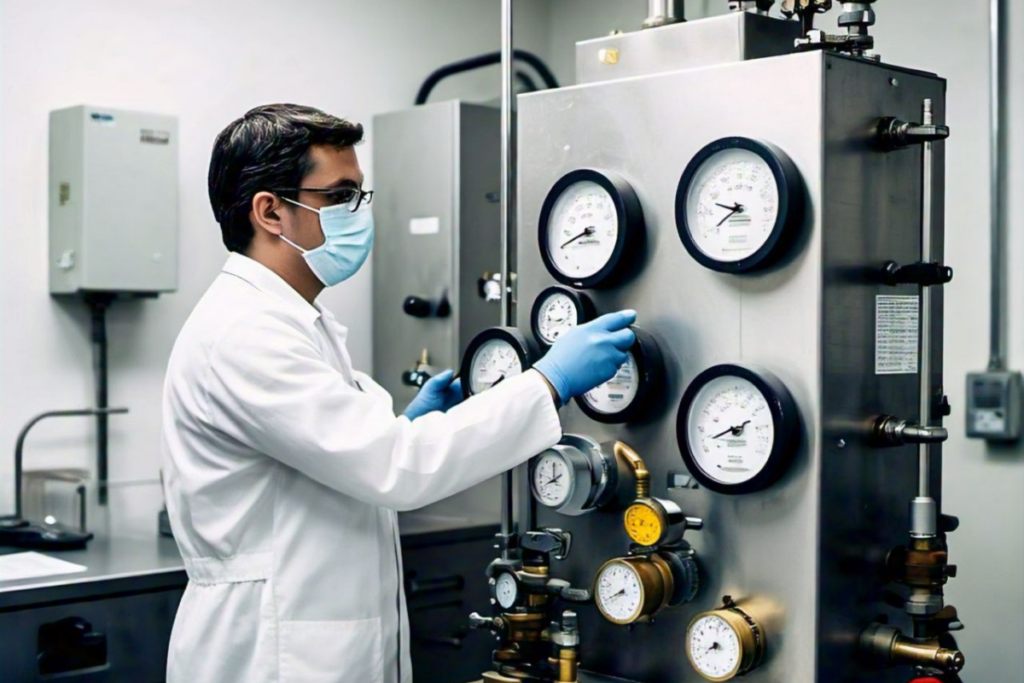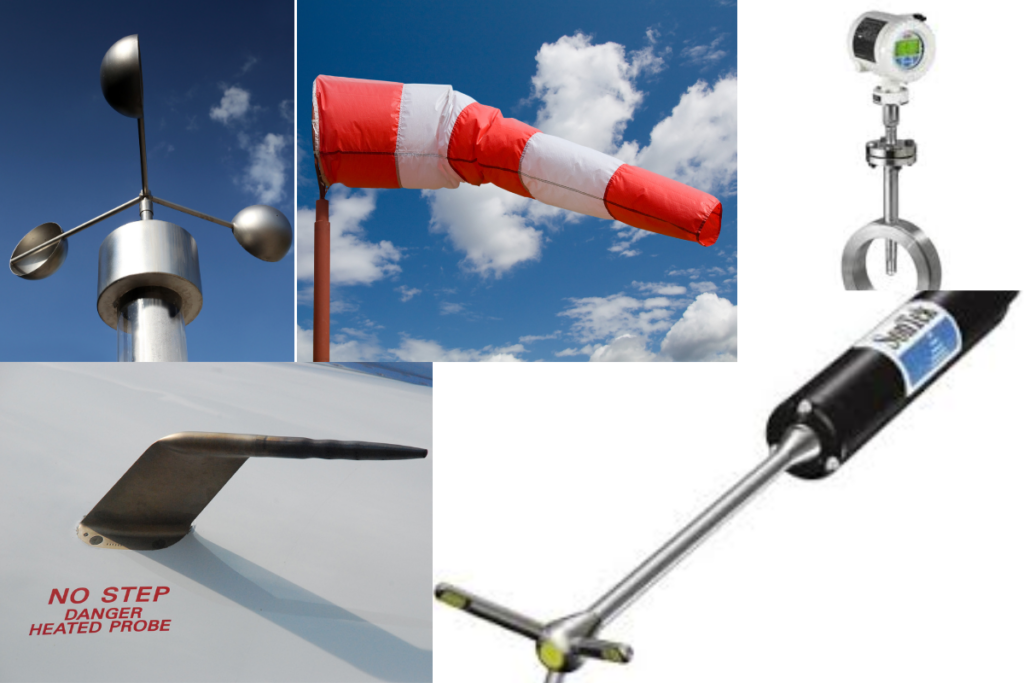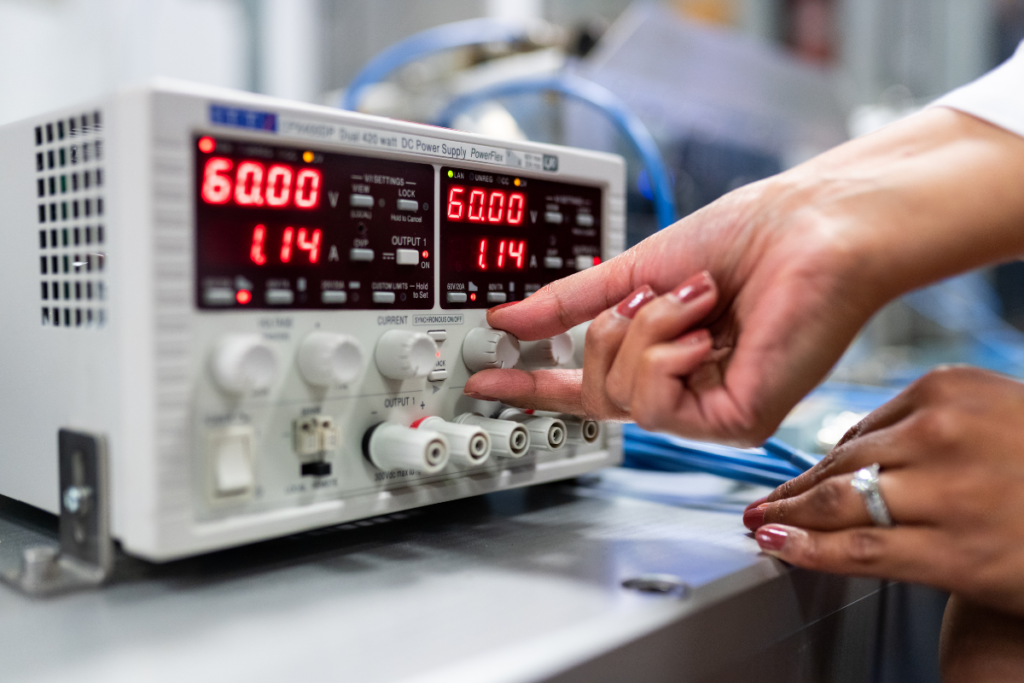Air Flow Calibration is the process of adjusting and verifying the performance of air flow measurement instruments to ensure they provide accurate and reliable readings. At Prism Calibration, we specialize in this critical service to help industries such as HVAC, pharmaceuticals, industrial manufacturing, and clean room environments. Accurate air flow measurements are vital for operational efficiency, energy savings, safety, and compliance.
Without proper calibration, air flow instruments such as meters, anemometers, and pitot tubes can provide inaccurate data, leading to system inefficiencies, increased energy costs, or unsafe conditions. Prism Calibration ensures that your air flow measurement devices meet industry standards, providing consistent, accurate results that optimize performance and minimize errors. Proper calibration helps in improving system reliability, energy efficiency, and compliance with regulatory standards.

Air Flow Calibration is essential for ensuring that air flow measurement instruments operate at peak performance. Here’s why it matters:
– Accuracy: Accurate air flow readings are essential for effective decision-making, especially in environments where air quality, temperature control, and ventilation systems are critical.
– Energy efficiency: Proper calibration ensures that air handling systems run as efficiently as possible, reducing unnecessary energy use and improving overall system performance.
– Compliance with industry standards: Many industries require air flow instruments to meet specific regulatory standards. Regular calibration ensures compliance with these regulations, such as OSHA and ISO standards.
– Operational cost savings: By ensuring accurate measurements, Air Flow Calibration helps reduce the risk of system malfunctions, which can lead to expensive repairs or replacements. Furthermore, it helps maintain energy efficiency, reducing operational costs.
Prism Calibration, we calibrate a wide range of Air Flow Instruments used across different industries. Some of the most common devices we calibrate include:
– Anemometers: These are used to measure the velocity of air and are commonly found in HVAC systems. Accurate anemometer calibration ensures that air flow is properly regulated within air ducts and ventilation systems.
– Air flow meters: These meters measure the volume of air passing through a duct or pipe. Ensuring that air flow meters are properly calibrated helps optimize HVAC and industrial systems.
– Pitot tubes: Pitot tubes measure both air velocity and static pressure in ducts. Regular calibration of pitot tubes ensures the accuracy of air flow readings in industrial and laboratory settings.
– Thermal mass flow meters: These devices measure the mass flow of gases, providing highly accurate air flow data for systems that require precise measurements, such as laboratories and industrial processes.
– Velocimeters: Velocimeters are used to measure air velocity in controlled environments like clean rooms or laboratories, where precise air control is necessary.

Air Flow Calibration procedures may vary depending on the instrument, environment, and required accuracy. Below are the most common calibration methods:
– Standard calibration: In this method, the air flow instrument is compared against a certified reference standard to verify its accuracy. Adjustments are made if any discrepancies are found.
– In-Situ calibration: This procedure is performed directly on-site, often for larger or immovable instruments. This ensures that calibration is conducted under actual operating conditions.
– Point calibration: Point calibration involves calibrating the instrument at specific points in its range. This method is particularly useful for instruments that monitor air flow in systems with variable conditions.
– Dynamic calibration: This type of calibration is conducted under dynamic or fluctuating conditions to simulate real-world operation. This method is commonly used for systems that experience varying air flow patterns.
At Prism Calibration, we provide calibration services across a wide array of industries, ensuring precision, compliance, and operational efficiency. Our services are tailored to meet the specific needs of the following key sectors:
Our Air Flow Calibration process is designed to ensure the highest accuracy and compliance:
Before calibration, we thoroughly clean and inspect the instrument to ensure it is free of any obstructions or damage that could affect its performance.
We select the appropriate calibration standard based on the type of instrument and the conditions it operates under. This ensures that the calibration is accurate and compliant with industry regulations.
We use high-precision equipment to compare the instrument’s measurements to the reference standard. The instrument’s accuracy is assessed and adjusted as needed.
If any discrepancies are identified, we adjust the instrument to bring it into alignment with the calibration standards.
All calibration results and adjustments are documented, and a full report is generated to provide verification and traceability for compliance purposes.
Once the calibration is complete, we issue a certification that confirms the accuracy of the instrument and its compliance with relevant standards.

At Prism Calibration, we offer flexible calibration options to meet your specific needs:
– Onsite calibration: Our onsite calibration service brings our expert technicians directly to your facility, ensuring that large, stationary, or difficult-to-transport equipment is calibrated with minimal disruption to your operations. We bring all necessary tools and reference standards, so you can rely on accurate results at your location.
– In-Lab calibration: For portable instruments or systems that can be easily transported, our in-lab calibration provides an ideal solution. You can send your equipment to our state-of-the-art facility, where we will perform the calibration with precise instruments and controlled conditions. Our lab ensures high-quality, traceable results for a wide range of devices.
Why choose both options?
– Convenience: We understand that every calibration need is unique, so we offer both options to ensure you have a service tailored to your operational needs.
– Accuracy: Whether onsite or in-lab, our expert technicians ensure precise and reliable calibration, so your equipment functions optimally.
– Reduced downtime: Both options are designed to minimize downtime and keep your business running smoothly, with fast turnaround times for all services.
Proper Air Flow Calibration is essential for optimizing energy efficiency in your systems:
– Balanced air distribution: Proper calibration ensures air is distributed evenly across systems, preventing unnecessary energy use while maintaining required temperature and ventilation levels.
– Reduced energy consumption: When air flow instruments are calibrated, systems use only the energy needed to maintain the desired flow rate, reducing waste and lowering operational costs.
-Extended equipment lifespan: Well-calibrated systems are less prone to wear and tear, which extends their useful life and reduces the frequency of repairs and replacements.
Integrating Air Flow Calibration into your preventive maintenance program offers numerous benefits
– Early problem detection: Regular calibration helps detect issues before they become major problems, reducing downtime and maintenance costs.
– Improved system longevity: Calibration ensures that air flow instruments are working correctly, which helps extend the life of your HVAC systems and other equipment.
– Cost savings: By improving the efficiency of your systems, Air Flow Calibration helps reduce energy consumption and repair costs, ultimately lowering your operational expenses.
Air Flow Calibration ensures that your air flow measurement instruments provide accurate readings and comply with industry standards. It’s essential for optimizing system performance and ensuring safety.
Calibration improves the accuracy of air flow instruments, ensures compliance with regulations, and enhances energy efficiency, reducing operational costs.
Calibration should be performed every 6-12 months, depending on the usage and environmental conditions of the instrument.
Yes, onsite calibration is available, especially for large or immovable equipment. Our technicians can perform calibration at your facility, minimizing downtime.
